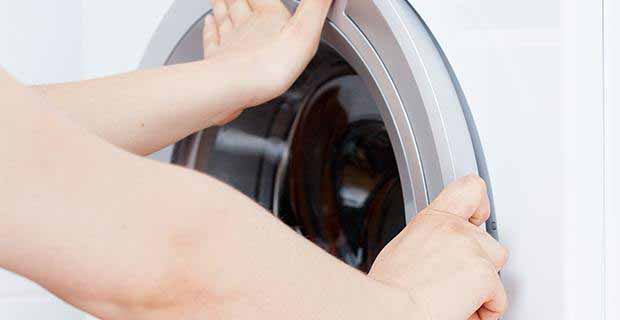What Happens When You Open the Washing Machine Door Prematurely?
Laundry day is a routine that touches every household, and within this seemingly simple task lies a crucial decision – when to open the washing machine door. The timing of unloading the washer is not merely a matter of convenience; it directly influences the cleanliness, freshness, and longevity of your garments. In exploring the delicate balance between efficiency and care, we embark on a journey to understand the impact of prematurely opening the washing machine door and uncover the best practices for maintaining garment quality. From avoiding mold and bacterial growth to striking the right balance between efficiency and care, each aspect plays a role in elevating your laundry routine. Join us as we delve into the art and science of proper timing in unloading the washer, unraveling its significance in preserving the integrity of your clothing, and optimizing the performance of your washing machine.
The Impact of Prematurely Opening the Washing Machine Door: Unraveling the Consequences
Prematurely opening the washing machine door might seem like a minor action, but its repercussions can extend beyond the immediate moment. Understanding the consequences is crucial for maintaining the efficiency and longevity of your appliance
One primary concern is the potential development of mold and bacteria within the washing machine drum. When the door is opened prematurely, it prevents proper ventilation, creating a damp environment conducive to microbial growth. This not only poses health risks but also leads to unpleasant odors that can transfer onto freshly cleaned clothes.
Furthermore, interrupting the washing cycle can impact the overall effectiveness of the process. Modern washing machines are designed to operate through specific cycles that include washing, rinsing, and spinning. Opening the door prematurely disrupts this sequence, affecting the quality of the wash and potentially leaving detergent residues on your garments.
Balancing the desire for a speedy laundry routine with the need for proper care is essential. Implementing patience and allowing the washing machine to complete its full cycle ensures optimal cleaning performance and reduces the likelihood of mold formation.
In conclusion, the consequences of prematurely opening the washing machine door are interconnected, affecting both the appliance's cleanliness and efficiency. By adhering to recommended usage practices and patiently waiting for the cycle to conclude, you not only preserve the quality of your clothes but also contribute to the long-term functionality of your washing machine.
Avoiding Mold and Bacterial Growth: Why Patience with the Washing Machine Door Matters
Patience proves to be a virtue, especially when it comes to the post-laundry routine and the crucial moment of opening the washing machine door. Understanding why patience matters in this context is pivotal for maintaining a clean and hygienic laundry environment.
One of the primary reasons to exercise patience is to prevent the growth of mold and bacteria inside the washing machine. When the door is opened prematurely, it disrupts the natural drying process, creating a damp and enclosed space that becomes an ideal breeding ground for microbes. By patiently allowing the door to remain closed until the cycle is fully completed, you mitigate the risk of mold formation and bacterial proliferation.
Moreover, practicing patience contributes to the overall cleanliness of your clothes. Closing the washing machine door until the interior has had sufficient time to dry helps prevent the transfer of any lingering odors or contaminants onto freshly washed garments. This attention to detail enhances the quality of your laundry and ensures a more pleasant experience when handling clean clothes.
In conclusion, the significance of patience with the washing machine door extends beyond a mere inconvenience. It plays a crucial role in safeguarding your laundry against mold and bacterial growth, ultimately contributing to a healthier and more hygienic home environment.
Balancing Efficiency and Care: Best Practices for Opening the Washing Machine Door
Efficiency and care are the dual considerations that come into play when deciding the optimal moment to open the washing machine door. Unveiling the best practices in this delicate balance is key to ensuring both the performance of your appliance and the longevity of your garments.
To strike this balance effectively, consider waiting for a short duration after the washing cycle completes before opening the machine door. This allows any residual moisture within the drum to evaporate, minimizing the risk of mold and unpleasant odors. Patience in this moment not only safeguards the internal cleanliness of the machine but also preserves the freshness of your laundry.
Another best practice is to make use of the machine's designated features, such as the delayed start function. This allows you to synchronize the completion of the washing cycle with a time that aligns with your schedule, reducing the temptation to open the door prematurely due to time constraints.
In essence, the key lies in a mindful approach to the washing machine's operation. Balancing efficiency and care involves strategic timing, utilizing available features, and fostering a habit of patience. By adopting these best practices, you optimize the performance of your washing machine while giving due consideration to the garments it cleans, creating a harmonious blend of efficiency and care in your laundry routine.
Preserving Garment Quality: The Role of Proper Timing in Unloading the Washer
Proper timing in unloading the washer is a crucial factor in preserving the quality and longevity of your garments. Delving into the significance of this moment reveals how a mindful approach to timing can have a lasting impact on the condition of your clothes.
The first consideration is allowing the washing machine to complete its full cycle. By patiently waiting for the cycle to conclude, you ensure that each step, including washing, rinsing, and spinning, is executed thoroughly. This contributes to optimal cleaning performance and prevents the risk of detergent residues clinging to your clothes.
Moreover, the role of timing extends beyond the cleanliness of the clothes. Allowing a brief period after the cycle completion lets the residual moisture within the drum evaporate. This minor yet crucial step minimizes the chances of mold and bacterial growth, which can adversely affect both the fabric quality and the overall hygiene of your laundry.
An additional practice to enhance garment quality is promptly removing clothes once the cycle concludes. This prevents wrinkles and eliminates the need for additional ironing, preserving the integrity of the fabric over time.
In conclusion, proper timing in unloading the washer is an essential aspect of garment care. By exercising patience, you not only ensure cleanliness but also contribute to the longevity and quality of your clothes. This mindful approach to timing transforms the simple act of unloading the washer into a proactive step toward maintaining your wardrobe's pristine condition.








